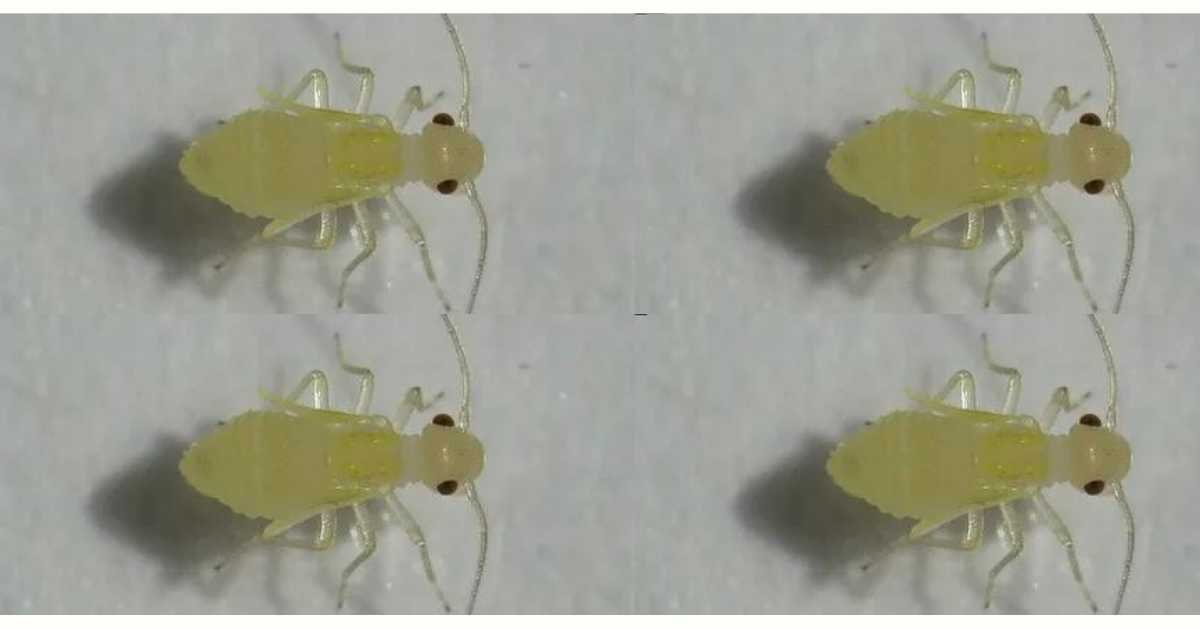Staubläuse, known in English as booklice, are tiny, often unnoticed insects that can become a nuisance in homes and other indoor environments.
Despite their size and seeming insignificance, these insects can cause damage to valuable items like books, wallpaper, and foodstuffs.
If you’ve noticed small insects in your home and suspect they might be Staubläuse, understanding what they are, why they appear, and how to deal with them effectively is essential.
In this article, we’ll explore everything you need to know about Staubläuse, including their biology, behavior, the problems they can cause, and how to eliminate them from your home.
What Are Staubläuse?
Staubläuse (booklice) are tiny insects belonging to the order Psocoptera. Although they are called “lice,” they are not true lice, and they do not feed on human blood or hair. They are usually found in damp, warm environments where mold or fungi thrive, as these form their primary food source.
Physical Appearance
Staubläuse are very small, typically ranging in size from 1 to 2 millimeters in length. They are generally pale in color, with shades varying from light brown to almost translucent. While some species have wings, most Staubläuse found indoors are wingless.
Life Cycle
The life cycle of a Staubläuse consists of three main stages: egg, nymph, and adult. A female Staubläuse can lay up to 100 eggs in her lifetime, which are often deposited in crevices or other hidden places. The eggs hatch in about two weeks, and the nymphs undergo several molts before becoming adults.
The lifespan of Staubläuse is relatively short, with most adults living for only a few weeks to a few months. However, due to their rapid reproduction and ability to thrive in the right conditions, they can quickly become an infestation.
Why Do Staubläuse Appear in Homes?
Staubläuse are drawn to environments where moisture and food sources are abundant. Understanding why they appear in homes is the first step in preventing and controlling an infestation. Here are some of the common reasons Staubläuse might invade your living space:
1. Dampness and High Humidity
Staubläuse thrive in humid conditions, especially in areas where moisture is present. Bathrooms, basements, kitchens, and poorly ventilated spaces are all common areas where these insects can be found. If there is water damage, leaking pipes, or inadequate ventilation, Staubläuse will quickly find these areas hospitable.
2. Presence of Mold and Fungi
The primary food source for Staubläuse is mold and fungi, which tend to grow in damp and poorly ventilated areas. Even if mold is not visibly present, microscopic fungal spores may still be in the environment, providing ample sustenance for Staubläuse.
3. Old Books, Wallpaper, and Paper Products
Staubläuse are commonly found in libraries, bookshops, and storage rooms with large quantities of paper materials. They feed on the glue that binds books and wallpaper, as well as the mold that can grow on paper products stored in humid conditions. If your home has a collection of old books or wallpaper, particularly in damp areas, it could be a prime breeding ground for Staubläuse.
4. Stored Food Products
Staubläuse may also infest stored food products, particularly those that are improperly sealed or stored in humid environments. They are especially attracted to dry goods like flour, cereals, and grains, which can harbor microscopic fungi that the insects feed on.
Are Staubläuse Harmful?
While Staubläuse are not harmful to humans or pets, they can still be problematic in certain ways:
1. Damage to Books and Paper Products
Staubläuse are notorious for damaging books, manuscripts, wallpaper, and other paper products. They feed on the starch in book bindings, glue, and paper, which can lead to degradation of valuable or sentimental items.
2. Contamination of Food
Although Staubläuse do not bite or transmit diseases, they can contaminate food sources, especially dry goods stored in damp environments. Finding these tiny insects in your pantry can be unsettling, and you may have to discard any food they have come into contact with.
3. Unpleasant Infestations
Although they are not physically harmful, Staubläuse can be an unwelcome sight in the home. Their presence in large numbers can make areas of your home feel unsanitary, and infestations may lead to the growth of mold and mildew, which can pose a health risk.
How to Get Rid of Staubläuse
Now that we’ve established what Staubläuse are and why they appear in homes, let’s dive into effective strategies for eliminating them from your living space. Addressing the root causes of the infestation and taking a multifaceted approach will give you the best results.
1. Reduce Humidity
The first and most crucial step in controlling Staubläuse is reducing humidity in your home. Because these insects thrive in damp environments, controlling moisture levels will help prevent them from reproducing. Here are some steps you can take:
- Use Dehumidifiers: A dehumidifier can be an excellent tool for reducing moisture in the air, particularly in problem areas like basements, bathrooms, and kitchens.
- Improve Ventilation: Proper ventilation is essential to keeping rooms dry and preventing the buildup of moisture. Consider using exhaust fans in areas prone to dampness, such as bathrooms and kitchens.
- Fix Leaks: Address any leaking pipes, roofs, or other sources of water damage that may be creating a damp environment conducive to Staubläuse.
2. Remove Mold and Fungi
Since Staubläuse feed on mold and fungi, eliminating these food sources is vital. Clean areas affected by mold with appropriate cleaning agents, such as vinegar or specialized mold removers. Be sure to thoroughly dry the areas after cleaning to prevent future mold growth.
3. Inspect and Clean Books and Paper Materials
If Staubläuse are present in your books or other paper materials, inspect them carefully for signs of damage. You may need to remove or discard heavily infested items. For valuable books or documents, consider using a vacuum cleaner with a brush attachment to remove any insects or eggs.
4. Store Food Properly
To prevent Staubläuse from infesting your pantry, store dry food products in airtight containers. This will keep moisture out and prevent the insects from contaminating your food. Check your stored food regularly for signs of infestation, and discard any items that appear to be affected.
5. Use Insecticides (As a Last Resort)
In cases of severe infestations, you may consider using insecticides to control the population of Staubläuse. Be cautious when using chemical treatments, especially around food and sensitive areas. Natural alternatives like diatomaceous earth can also be effective in controlling Staubläuse without the use of harsh chemicals.
Preventing Future Infestations
Once you’ve managed to eliminate the Staubläuse infestation in your home, preventing their return is essential. Here are some long-term prevention strategies:
- Maintain Low Humidity: Keep the relative humidity in your home below 50% to prevent Staubläuse from thriving.
- Regular Cleaning: Regularly clean areas prone to dampness and mold growth, such as bathrooms, basements, and kitchens.
- Monitor Paper Products: Inspect and clean books, documents, and other paper products periodically, especially if stored in areas with high humidity.
- Proper Food Storage: Store food in airtight containers and ensure your pantry is clean and dry.
Conclusion
Staubläuse, while small and relatively harmless to humans, can become a nuisance when they infest homes, damaging books, paper products, and stored food.
These tiny insects thrive in humid, moldy environments, so controlling moisture and removing their food sources are key to eliminating and preventing infestations.
By following the steps outlined above, you can protect your home from Staubläuse and maintain a clean, pest-free environment.


